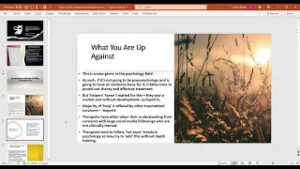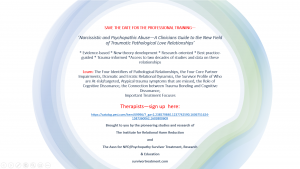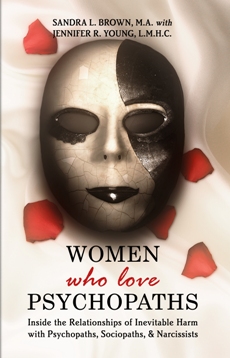Last week we began talking about the ongoing battles with pathologicals—whether it is a break up, move out, divorce, property settlement, mediation, child custody, or the ever-revolving door of litigious events with law enforcement or the legal system. By nature of the pathology, they are MORE likely to allege falsified abuse, stalk the other parent, sue, continue to sue, not settle, to refuse mediation services, to go to court over things like “his shoes are dirty, therefore this is parental neglect,” to reject every child evaluator, reject every child therapist, reject every child pediatrician, reject every child’s school choice and on and on.
They gaslight situations suggesting things have happened that didn’t, nor can they be proven that they DID or DID NOT happen. (Classic gaslighting is associated with NPDs, ASPDs, socio/psychopaths.) After exchange antics, they are MORE likely to need court monitored visits which means ‘a babysitter’ is required to watch their behavior, yet they will reject every monitor chosen, every center selected, or will find centers that are the farthest away in the most dangerous areas to ask the other parent to bring the child to.
They also do not follow through on child support payments, medical needs the children may have, do not pay their share of attorney and court fees, etc. They use up enormous amount of legal resources which have given them their own title within the legal system – ‘High Conflict Person’. Eventually this becomes a ‘High Conflict Case’ for you and for them.
A ‘typical’ legal scenario (provided by Bill Eddy www.billeddy.com) is:
A Petition is filed, and then there are countless emergency court hearings, restraining orders, restricted visitation, and/or residence exclusion, many filing for temporary hearings on custody, visitation, child support, and spousal support. Then there is the unending filing for many declarations for hearing, getting an evaluator appointed, preparing documentation for evaluators/court (often done multiple times), serving numerous subpoenas, taking lists and lists of depositions, going thru the demand for documentations, attending multiple temporary hearings.
Now they have received the trial only to have delays that can go on for years, disputes over evaluators’ reports and other unending other objections. Then begins the continuous disputes over trial court orders, motions for reconsideration, etc. Sprinkled throughout are the constant allegations to child services of abuse and neglect, the rallying of others to support the allegations, and the utter exhaustion of the child services departments with the constant threats of suing them, etc. Once/if after all these enormous amounts of time, money, energy is expended and the divorce is granted, there is still the ongoing post divorce hearings with the constant modification requests, custody battles, alleging new relationships which are bad for the children, and failed relationships with others bringing in new conflicts, drama and trauma.
It’s easy to see that this kind of behavior is what is shutting down our court systems and why it’s hard to get simple things done. Ninety percent of the problems are being produced by a small percentage of the people who have the largest percentage of mental health and pathology disorders. In fact, it is cases like THESE that indicate to professionals working on these cases that there is, in fact, pathology present. They have already been named ‘High Conflict Persons’ to help identify the partner who is likely to keep producing litigious insanity. It has taken a while for all the professional systems involved in cases like these to come to understand what behavior like this IS attached to – chronic and unrelenting pathology.
For many years euphemisms have been used for these people – “difficult cases”, “pain in the butt cases”, “problematic”, etc. Instead of understanding these ARE the behaviors associated with pathological conditions and pathology is simply being what it is—in the relationship, in the parenting, and in the courts. It holds its mask in place for a while but the mask always slips allowing other professionals to identify the behaviors and recognize the pathology. This is the unification of how Public Pathology Awareness is beginning to allow systems involved with pathologicals to more easily identify them by their universal and consistent behaviors, in and out of court.
One of the Institute’s goals is to bring training about these consistent and universal behaviors to therapists, coaches, the legal system, child evaluators, monitors, child therapists, Minor’s Counsel, and social service workers. ‘Why’ high conflict persons act this way has everything to do with the disorder itself.
When we understand pathology and its neuro-implications, we can not only know what behaviors go with which disorders but why. We can learn to predict the kinds of known behaviors and antics that go with pathological disorders– in child rearing, in court proceedings, and in relationship endings. Those behaviors include imperative impulsivity, loophole lying, game playing, gaslighting, reliable revenge, the prevalent projecting, and legendary legal litany of cases. Normal people don’t do this in court, in relationships, or in life. It is the glaring opposites that almost always give us the best indicator that what is happening is not what other people do, behave, or believe. So, ours shouldn’t be to ask ‘why’ pathologicals do this. It’s to say ‘why not?’ After all, that’s how they are wired.
(**If we can support you in your recovery process, please let us know. The Institute is the largest provider of recovery-based services for survivors of pathological love relationships. Information about pathological love relationships is in our award-winning book, Women Who Love Psychopaths, and is also available in our retreats, 1:1s, or phone sessions. See the website for more information).






